10 practical tips for using fire on a lifestyle block
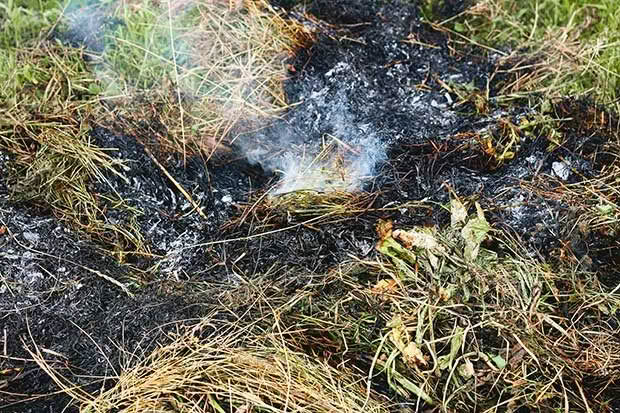
Burning is an ancient, organic way to clear land of undesirable plants, turning them into fertiliser. But a good burn takes planning and timing. Here’s what to about before you strike a match.
Words: Sheryn Dean
If I could, I would be a pryrotechnic engineer, someone who makes big fireworks that explode in time to music.
Since that opportunity isn’t likely to come my way I have had to console myself with fire. An open fire has always been a part of my life and adds a lot more than just heat to my home.
Scrub fires are much more fun, and a very effective, organic means of controlling large areas of noxious weeds to a level where they are more easily eliminated.
Of course, bush fires can get out of control and cause serious damage. Use some fire sense if you are going to burn outside this summer.
FIRE AS A GORSE KILLER
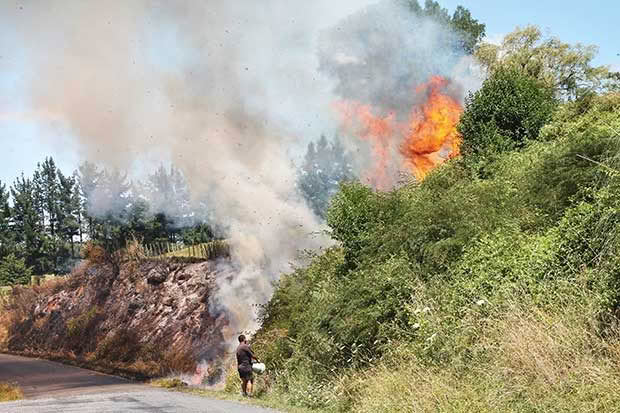
This bank of blackberry, convolvulus, pig fern and privet was opposite my driveway. My neighbours and I got together to clear and replant it with more productive trees, mostly to prevent the weeds from invading our properties.
Burning is only the start of clearing weeds. It clears the mass but does not kill the roots which will quickly regrow. In the case of gorse, it can even stimulate seed. Gorse seed can be viable for up to 40 years, so stimulating it and eliminating it needs to be done.
Be prepared to keep on top of regrowth for a couple of years after your burn.
1. TIMING IS EVERYTHING
The best time to burn plants is when they are dry, usually in late summer. Unfortunately, the easiest time for a fire to get out of control is when all the surrounds are dry, usually in late summer.
You have to weigh up the flammability of your intended burn with the flammability of its surrounds. If you can get in and slash or crush some of the weeds beforehand, so they dry out, you can get most plant material to burn, even in winter. But unless you have very dry conditions, you probably won’t get as clean a burn.
My preferred strategy in the Waikato is to leave the intended slash to dry over summer, then light it after the first few showers of autumn have made the surrounds less flammable.
Check several different weather forecasts on the day. Wind is the most important factor. Delay if there is anything above a slight breeze. A rain forecast for the evening or following day is great as it will dampen any embers and stop flare-ups.
2. THE LEGALITIES OF FIRE STARTING
Most regions of NZ have restricted fire seasons or fire bans throughout the summer. Checking and getting the relevant permit is free and painless in my area – I just fill in a form online – and it is worth doing even for the smallest fire. If an illegal fire gets out of control, you are up the proverbial … creek.
More importantly, when you get a permit, your local fire brigade is notified. Ours are all volunteers who give up their time to keep our community safe and I don’t want to waste their efforts by having them respond to my bonfire. If someone does call them (and many people do, without checking the situation first) and you don’t have a permit, the fire brigade will put it out and you will be left with a half-burnt, sodden mess to deal with.
Councils are no longer in charge of declaring fire seasons or issuing fire permits. It’s now the job of Fire and Emergency – an amalgamation of the NZ Fire Service and the National Rural Fire Authority – to declare fire seasons and issue fire permits for NZ in urban and rural areas. You can apply online and get more details here.
You still need to comply with city/district and regional council burning restrictions, even if you are issued a fire permit by Fire and Emergency.
Talk to your local fire brigade too. They will appreciate knowing your plan. Our volunteer brigade was happy to burn a dangerous pile close to buildings on their training night. We showed our appreciation with a donation, so it was a win/win for all.
3. FIRE CONTROL
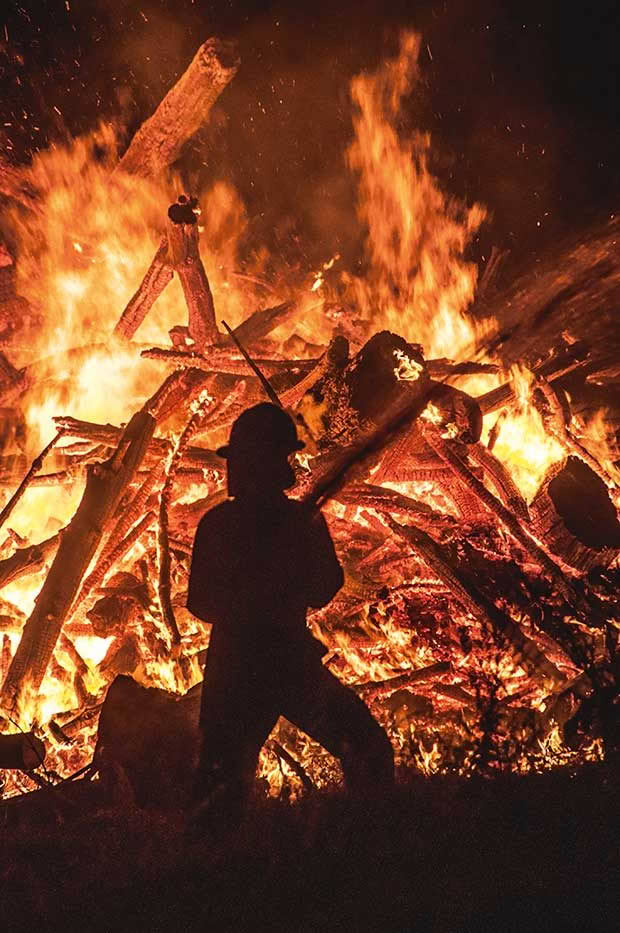
Our local volunteer fire brigade came out on a training night to burn a pile of slash that was close to some outbuildings.
Have fire control organised BEFORE you light a match. We have a 200-litre sprayer and the neighbour has a bigger one on his tractor. We have them hooked up, full of water, engines running and out of the shed, ready to go. You could also join garden hoses together and attach nozzles and check your tanks have sufficient water. We also have several fire extinguishers in permanent positions around our house and workshops,and ensure they are serviced annually and always accessible.
For one fire, I set out buckets full of water with old woolen blankets and jute sacks soaking in them every 10 metres or so along a danger area. They saved the day in the end. When things go bad, you don’t have time to muck around. The five minutes it takes to get things organised can make all the difference between the fire that almost got away and the one that did.
4. BE CONSIDERATE AND CHECK ON YOUR NEIGHBOURS

This bank was covered in green weeds and was very difficult to burn. We sprinkled old oil around the base, then set the fire with a gas blower.
Smoke travels a long way and it will affect your neighbours. It doesn’t take much to give them a call or drop a note into their letterbox so they can close windows, bring the washing in, and check animals are not panicking. It’s courteous and fosters good relations.
Check their paddocks, particularly if they’re upwind of you. If they have some dry hay almost ready to cut, even on the far side of a shelter belt, it is not a good time to burn. Sparks fly. Dry grass is extremely flammable. Delay your burn until it is cut and harvested.
5. MAKE A BREAK
Fire travels. While you may think it is going to go one way, it can easily go another.
The most interesting fire I was involved in fighting (not one I lit!) was in the Australian outback. We fought it for four days before we gave up. We bulldozed and back-burnt a fire break instead. It was only when it reached the break that it burnt itself out. Clear all the boundaries of your fire of anything burnable. This needs to be at least a metre for a ground fire, more if you’re burning bushes or trees.
Bulldozing a break is ideal, but since most of us don’t have one on hand, clear shrubs, rake up pine needles, mow grass short (with a catcher) and, if feasible, soak the ground with water. The bigger the fire and the dryer the surrounds, the wider and cleaner the break needs to be. A break is not fail-safe – a fire can jump and sparks will fly – but it definitely helps. Note that gum trees and pine trees (even live ones) are particularly flammable so clear a wide margin around them, or think again if a fire is your best method.
6. PLAN AHEAD
Think about how you are going to light it and make sure everyone involved knows the plan. Fire burns upwards. If you are lighting the side of a gully and light it at the base, it will roar up. This is good if you are burning green matter and have people, water and a firebreak at the top. But it is bad if you are burning dry matter and have flammables over the ridge. In that case, you want to start at the top and burn a more controlled, smaller fire that will gradually edge its way down.
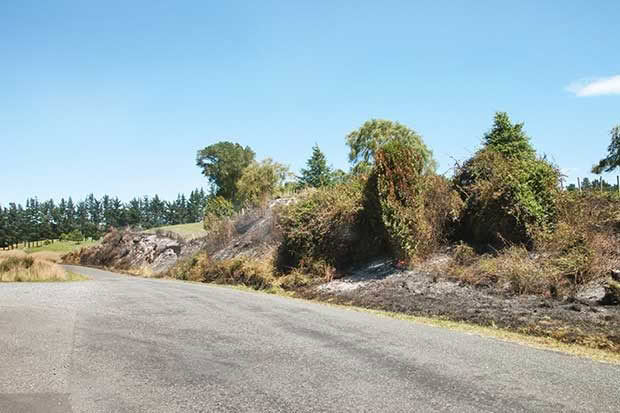
The green burn above didn’t get very hot but cleared enough that we were able to get in with a brushcutter and tractor so we could cut and pile for a second burn.
Don’t light everything at once. A fire roars (usually for less than 20 minutes), then settles. If you have a big area to burn, be patient and let one bit catch, do its thing, then settle, before you move onto the next.
I once lit seven big piles of slash in a gully at the same time. Let’s just say the resulting fire turbulence made fireworks look tame and I didn’t need any music to accompany it. Always make sure everyone always has a clear escape route as it is surprisingly easy to find yourself encircled in flames. If you are working in a team, caution everyone to watch others and not to get ahead.
7. HOW TO LIGHT A FIRE
Newspaper and a packet of matches are adequate for many fires. Old oil or diesel dribbled around the start line can help green matter burn. NEVER use petrol as it and its fumes are extremely flammable and very dangerous.
I prefer a chunk of pumice wired onto a long, No 8 wire ‘handle’, soaked in kerosene. This will light with a lighter and is easy to thrust deep into a blackberry bush, where the dead matter is, to get things started. Take a cut-down milk bottle of kerosene with you to keep the pumice in (it will self-extinguish) and you can re-use it all day.
8. MAKE AN OCCASION OF IT
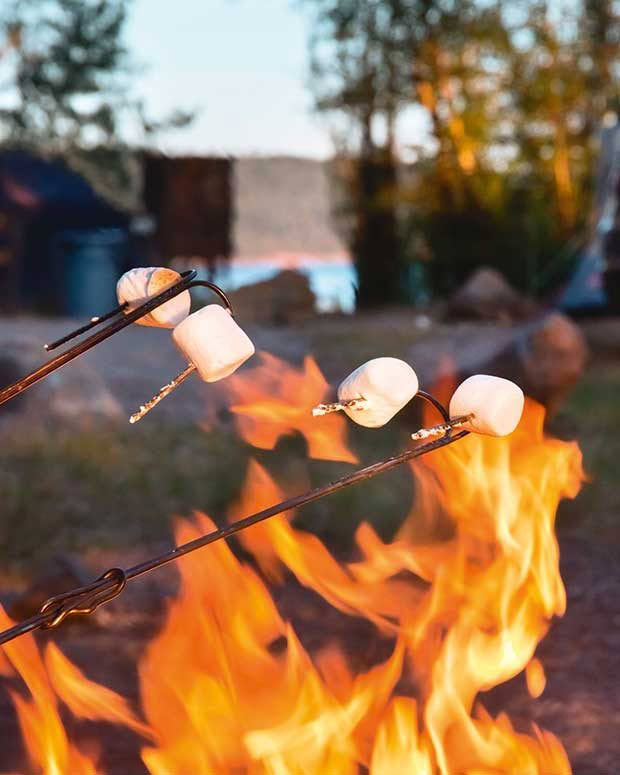
Guy Fawkes is at a stupid time of year. The weather is unreliable, the wood is wet and days are already lengthening. And it has little to do with NZ anyway. It’s more fun to celebrate in autumn after the first rains and invite friends for a bonfire of prunings.
Rather than lighting a big bonfire in one dangerous rush of flames, create two. Light the one upwind first and delegate anyone keen (in my case, teenage boys) to keep feeding it with a few branches at a time. It keeps them busy and happy, keeps the fire under control, tires them out, and you can relax with a glass of wine. Make sure there are plenty of marshmallows, chocolate thin biscuits (to sandwich the marshmallows between), sausages and long sticks.
9. PATROL
I once burnt a small palm tree trunk. It smouldered for 10 days. Depending on what you are burning, a fire can remain hot for days. It can flare up again especially in hot, breezy weather, so keep an eye on a fire area in the days after it appears to go out.
If your fire has burnt out, rake it over and hose it until soaked to make sure. Never cover hot embers with sand or dirt as this hides the fire from other people (and animals) who could mistakenly walk on it. This also holds the heat in and allows the embers to simmer for longer.
10. AFTERCARE TIPS
Unless you manage to burn extremely hot (100°C+) for at least 15 minutes, a scrub fire is going to clear the top growth, but not kill the roots or seeds. Gorse, blackberry, boxthorn and even pigfern will quickly regrow.
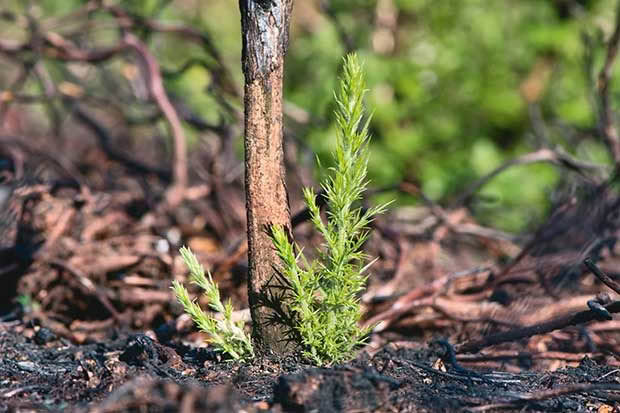
Gorse has an amazing ability come back to life after a fire. Once an area is burnt off, you need to get other plants growing there quickly, to shade out any regrowth.
• Spread your desired grass seed as soon as everything has cooled down so it gets established and crowds out weed species.
• Adjust your soil with fertiliser to encourage the desired crop (and discourage the weeds).
• The ash will fertilise the soil. Burn-offs are used as a farming method in Australia but if done for extended periods it depletes carbon levels.
• Ash is mostly calcium (which is alkaline) and potash but gorse and scrub often grow on acidic soils so check pH levels and adjust if needed.
• Keep on top of regrowth using stock, by grubbing out, or even spray if you must.
BONUS: THE BEST WAY TO ROAST A POTATO IN A FIRE
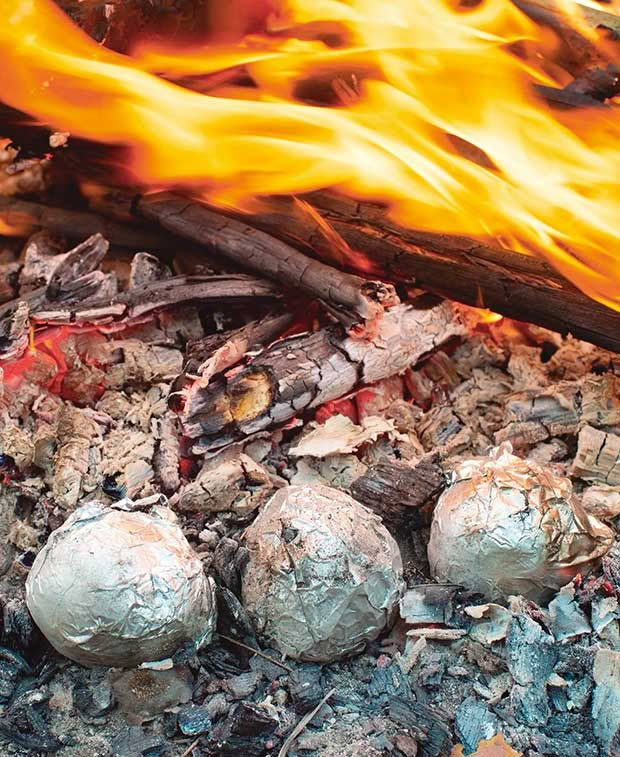
If you want to roast potatoes, poke a nail or a piece of wire through the middle of the potato, then wrap the outside in tinfoil. The wire transfers the heat to the centre of the spud so it cooks evenly. As with all cooking, it is easier to rake a few embers out to one side of the bonfire to use as an oven, than to have the potatoes in the flames.
5 DON’TS OF FIRE BUILDING
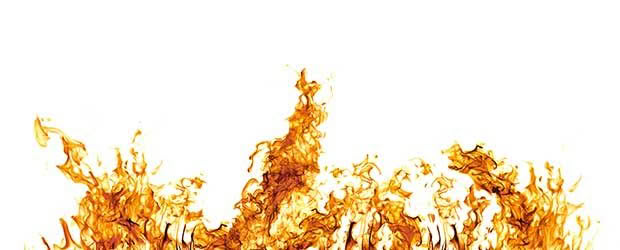
1. Don’t burn old tyres
• it’s illegal;
• it gives off toxic smoke
• it leaves a toxic residue in your soil.
This goes for any polluting rubbish. Don’t contaminate our air and your soil – go to the effort of disposing of it appropriately. You want your ash to nurture your ground.
2. Don’t hide your children away
Lighting a fire is an age-old skill that everyone needs to learn. Let kids do it under supervision and control. It’s much more fun and far less costly than finding them playing with matches in the woodshed.
3. Don’t think ‘she’ll be right’
This is one time when mistakes can be very costly. If the weather is windy, or if you are not going to be home the next day, or if the surrounds are too dry, leave it for another time.
4. Don’t forget your water systems
If you collect rainwater from your roof and there is a risk of contamination with ash or fire control, disconnect your tank.
5. Don’t use petrol
And don’t use an old petrol container to start or boost a fire – ever.
Love this story? Subscribe now!
 This article first appeared in NZ Lifestyle Block Magazine.
This article first appeared in NZ Lifestyle Block Magazine.
